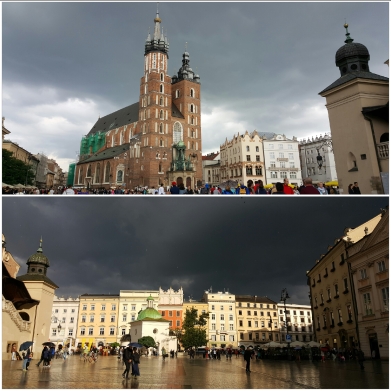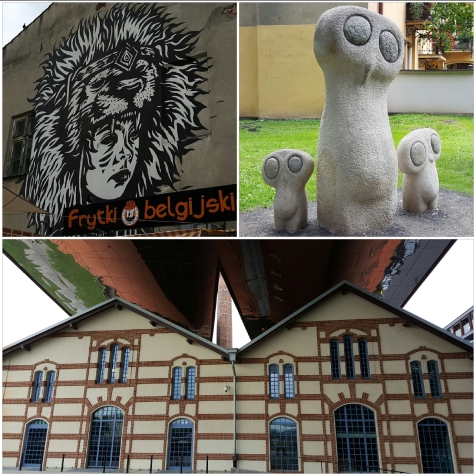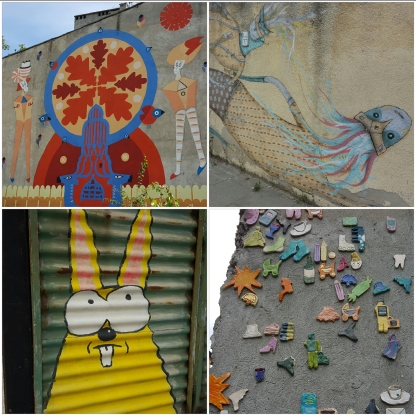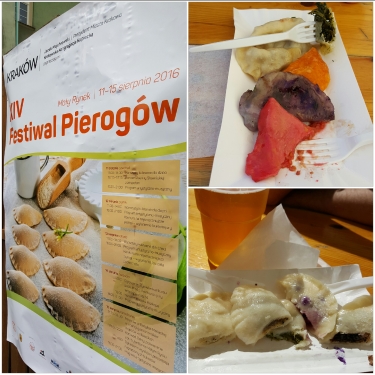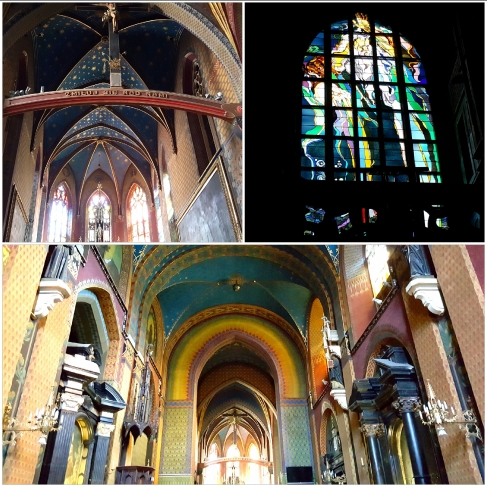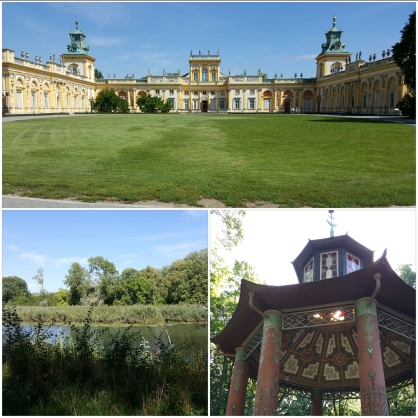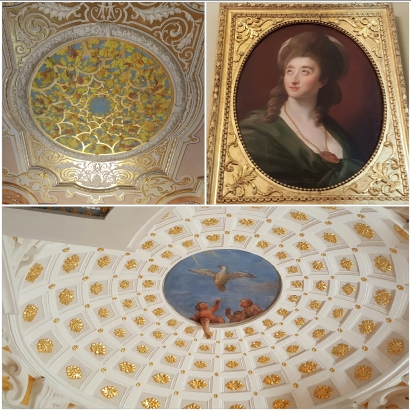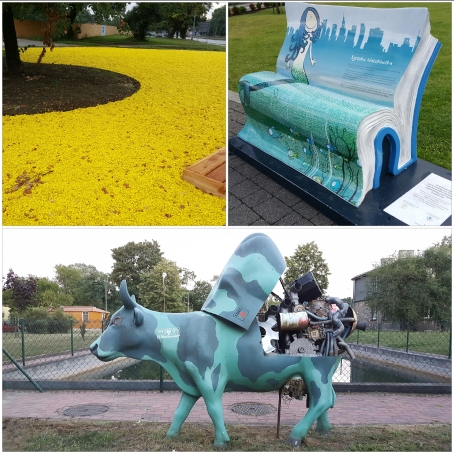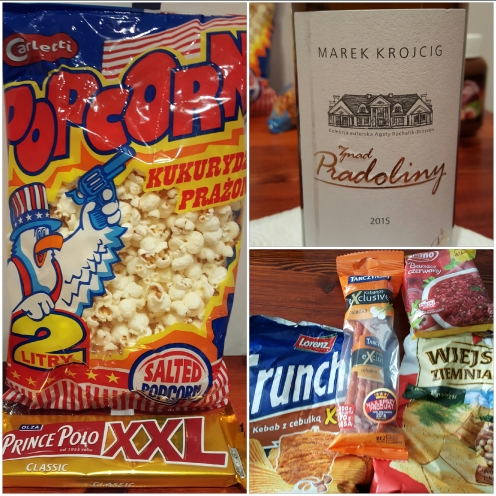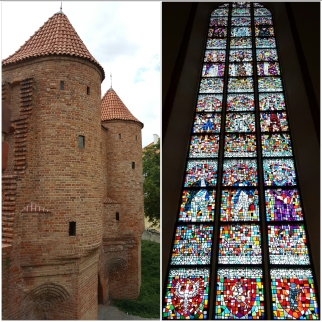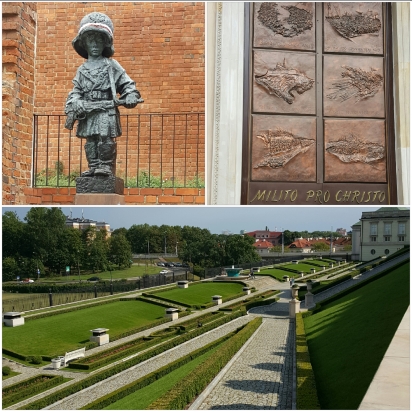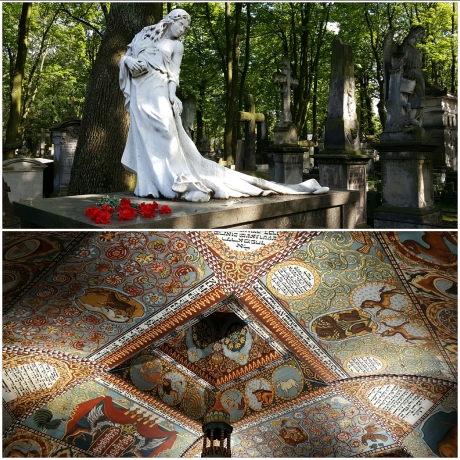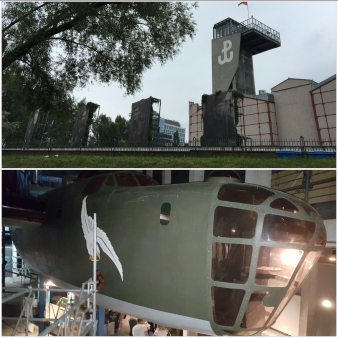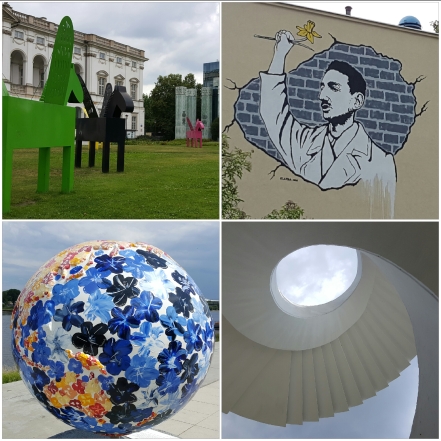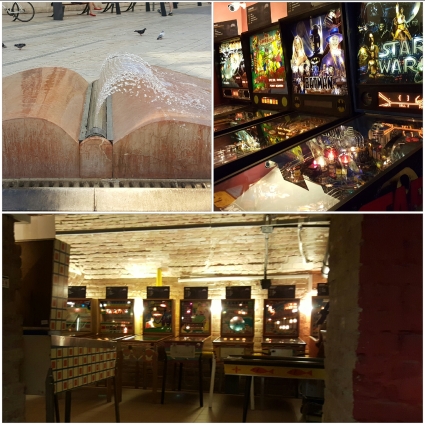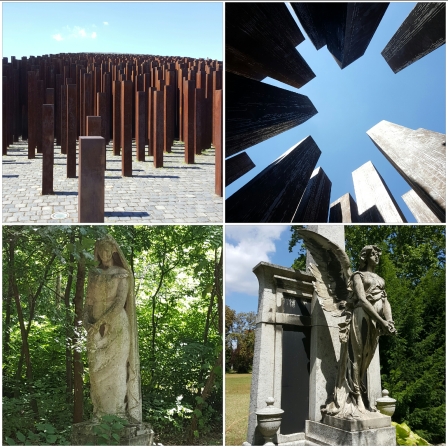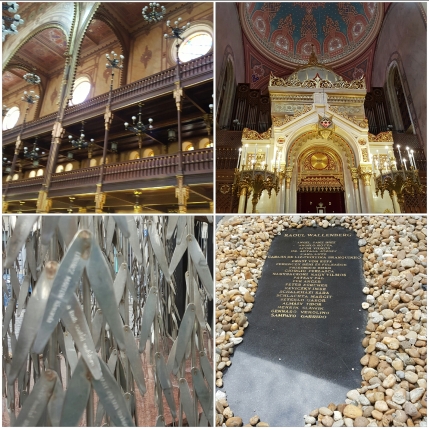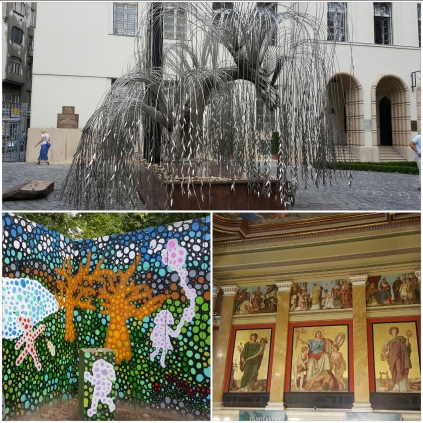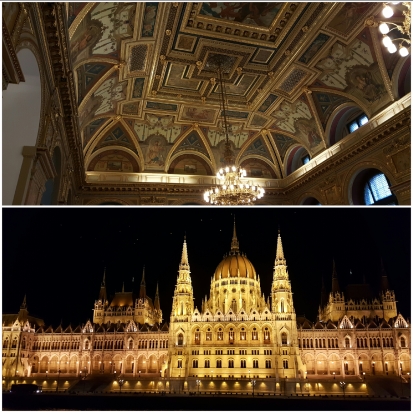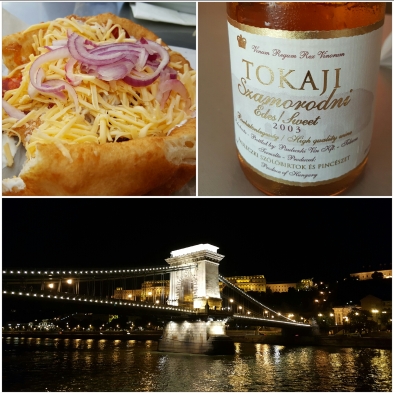Poland and its people suffered for years under Nazi rule, and both cities we visited have many memorials to the atrocities and acts of resistance. The Nazi party and the German government had been operating camps in Germany since the early 1930’s and shortly after their invasion of Poland, they began setting up camps there as well. We knew in advance of our stay in Krakow that we would be sure to visit Auschwitz. What we didn’t know until after we arrived was that just a couple of kilometers from our apartment was the site of another camp, Plaszow.
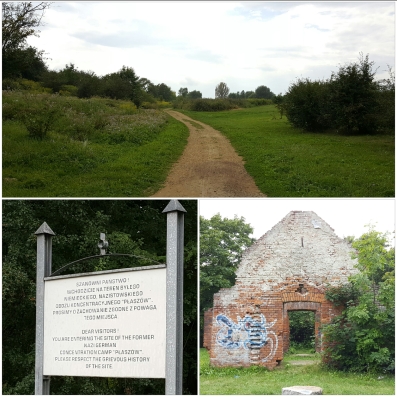
Plaszow was set up by the Nazis in 1942 as a forced labor camp for Krakow’s Jews, who had already been confined to a Ghetto. (Oskar Schindler’s factory was part of this camp’s labor system, but his attempts keep his Jewish workers fed and safe were the exception.) Conditions were awful – little food or medication and brutal beatings by the guards. As time passed, large scale executions began taking place at the camp and thousands were shot in addition to those that were worked to death or perished from disease. As the Soviet army approached Krakow, the Nazis forced the prisoners to dismantle the camp and burn victim’s bodies in order to hide their crimes.
Today, only a few ruins remain amid an otherwise empty field. We walked through on gray day and encountered just a couple of others. A few markers stand at the edges of the site, but it is mostly a quiet place for reflection. It was a very different kind of memorial to the victims that what we encountered at Auschwitz later in the week.
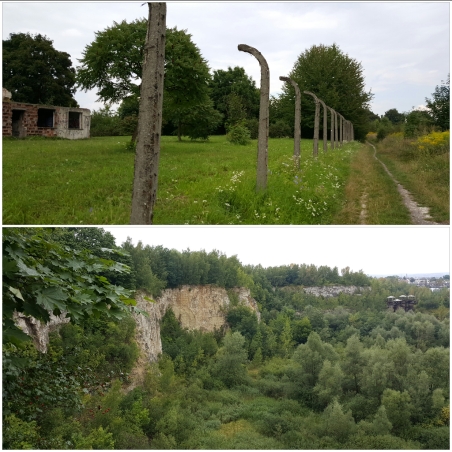
Where Plaszow was largely destroyed, Auschwitz was left mostly intact as the Nazis fled the Soviets advancing on the Eastern Front. This time, survivors were left alive along with items confiscated from victims, and plenty of evidence of the Nazi’s crimes. The camp is actually divided into multiple parts. There were three main camps -Auschwitz I, Auschwitz II-Birkenau, and Auschwitz-Monowitz – in addition to dozens of sub-camps.
Our tour began at Auschwitz I, which was created out of army barracks. It was smaller than I expected. Hundreds of prisoners would have been housed in each building in appalling conditions. The buildings are red brick, which I found disconcerting. It looked almost like a college campus except for the barbed wire fences ringing the area, the torture barrack with its bricked-over windows and yard used for executions, and the looming gallows.
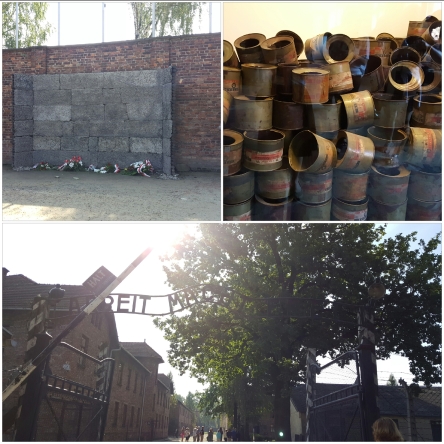
Most buildings now hold exhibits on the suffering of groups the Nazis found “undesirable,” especially the Jews, who were brought to the camp from all over Europe. Heartbreaking rooms show items taken from the prisoners – suitcases carefully labeled so they wouldn’t get lost on the journey, thousands of pieces of cookware that would have been needed for starting a new life at the camp, piles of shoes. There were a pair of red patent leather wedges that reminded me of ones I owned in high school. I kept wondering if the girl who carried them with her anticipated a return to normal life; maybe they matched a dress she brought, maybe they made her feel taller. Most disturbing was a room full of human hair cut from those coming into the camp and from the bodies of those murdered in the gas chambers immediately upon their arrival. Some are still in ponytails and braids.
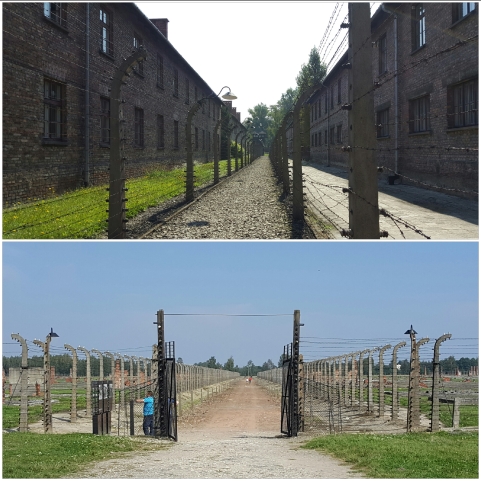
Auschwitz I felt small, compact. It made the experience of walking up to Auschwitz II-Birkenau so much worse. The parking lot for this portion of the camp sits partially behind a grove of trees. The infamous gatehouse with train tracks running under the archway is visible, along with several watch towers and barracks. But with each step toward the main gate, we moved past the trees and more fences, guard towers, and barracks kept appearing. It is massive. Again, hundreds of people were housed in each building; but this time there were countless buildings. The scale staggered me. This is the point at which the numbers become more abstract and harder to grasp. Tens of thousands of people would have been imprisoned here – this one camp would have been many times the size of the town I grew up in, and there were camps all across Nazi-occupied Europe. And those were the individuals the Nazis deemed fit for work. So many came into the camp and went straight to their death – sometimes more than 80% of the people arriving were murdered within hours of stepping off the train.
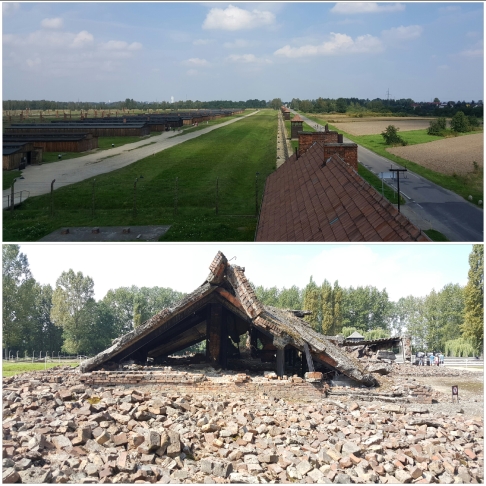
By the end of the war, more than a million perished just in the Auschwitz camps – gassed, starved, worked to death, suffering from disease and torture. The Crematoria buildings are ruins now – one was blown up in a revolt by the Sonderkommando, the others were destroyed and stripped of their killing systems as the Nazis retreated.
It is sickening to see how attentive to detail the Nazis running the camps were. The first Crematoria were built at Auschwitz I but lacked shower heads. Our guide described the panic this caused in prisoners as they realized it was a killing chamber – the noise they made disturbed the Nazi officers and guards and let other prisoners know what was happening. The next ones were built with the appearance of real showers, with hooks for clothes and the victims given soap on the way inside.
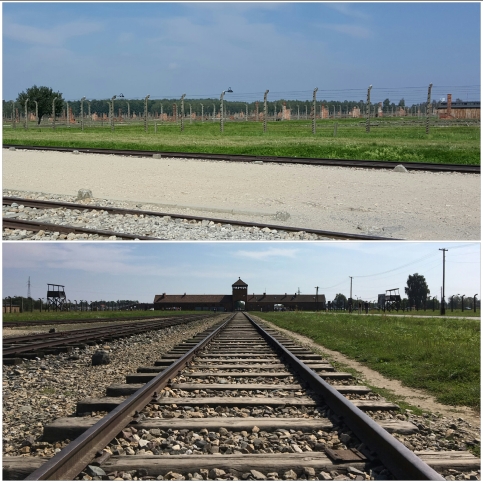
The surviving records are also disgustingly exact. Paperwork lays out how much gold was confiscated and shipped back to the Reich, how much human hair was sent to factories, how much companies were paying for prisoner labor. Not only did the Nazis systematically kill, they systematically exploited the belongings, the bodies, and any life left in their victims. In one cruel twist, some victims early in the war were even made to pay for their own rail tickets to the camp.
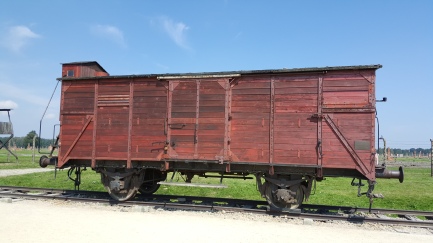
My brain is still trying to wrap itself around the horror of what I saw at Auschwitz. I can’t imagine the cruelty that would have been daily reality for so many, from the side of the victim or the oppressor. How anyone could meet out such abuses on others is saddening and stomach-churning. How anyone could survive such savagery is also beyond my comprehension. Humanity seems to have limitless capacities for both evil and for hope and defiance in the face of evil. Auschwitz should serve as a reminder and a warning that we need to stand up to oppression in all forms.
